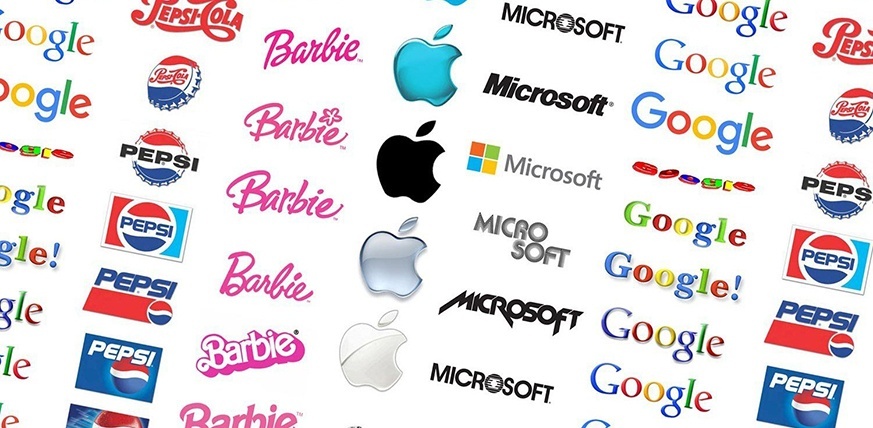Are you curious about the evolution of famous logos? From Shell to Apple, logos have undergone significant changes over the years. Companies have rebranded their logos to keep up with changing trends and to stay relevant in the market. In this article, we will explore the evolution of famous logos and what we can learn from them.
Logos are an essential part of a company’s branding. They are used to identify products or services that a company offers and are recognized by the public. A logo can convey a company’s message, values, and mission. Over time, logos have evolved to reflect changing trends and the company’s growth. Companies have rebranded their logos to stay relevant and to attract new customers.
In this article, we will look at the evolution of logos of some of the most famous brands. We will analyze the changes in their logos, what motivated the changes, and what we can learn from them. We will also discuss the impact of a logo on a company’s brand image and how a well-designed logo can help a company stand out in a crowded market.
The Birth of Logos
Logos have been around for centuries, evolving over time to become the iconic symbols we know today. In this section, we’ll explore the earliest logos and the symbolism behind them.
The Earliest Logos
The earliest logos were simple and straightforward. They were used to identify a particular person or group, such as a family or tribe. These logos were often made up of symbols or images that represented the group’s beliefs or values.
For example, the ancient Egyptians used hieroglyphics as a form of logo. These symbols represented various concepts, such as strength, power, and wisdom. The Greeks also used logos, often in the form of a seal, to identify their pottery and other goods.
The Symbolism in Early Logos
Early logos were often rich in symbolism, representing the values and beliefs of the people who created them. For example, the Christian cross is one of the oldest logos in history. It represents the sacrifice of Jesus Christ and the redemption of humanity.
In ancient China, logos were used to represent the emperor and his power. The dragon was a common symbol used in these logos, as it was believed to represent strength and good fortune.
In medieval Europe, logos were often used by guilds to identify their members and their trade. These logos often featured images of the tools or products associated with the guild, such as a hammer or a barrel.
Overall, the earliest logos were simple yet powerful symbols that represented the values and beliefs of the people who created them. As time went on, logos would continue to evolve, becoming more complex and sophisticated.
The Evolution of Logos over Centuries
Logos have been around for centuries, evolving with the times and technologies. In this section, we will explore the evolution of logos over the 19th, 20th, and 21st centuries.
The 19th Century
In the 19th century, logos were simple and straightforward, often consisting of a symbol or emblem that represented the company or organization. For example, the logo of the Singer Sewing Machine Company featured a simple, stylized image of a sewing machine. Another example is the logo of the Coca-Cola Company, which featured a simple, yet elegant script font.
The 20th Century
The 20th century saw a significant shift in logo design, with companies seeking to create more memorable and recognizable logos. Logos became more colorful and complex, often featuring a combination of symbols and text. One of the most iconic logos of the 20th century is the Nike swoosh, which was designed in 1971 and has become synonymous with the brand.
Another notable logo from the 20th century is the Apple logo, which has undergone several iterations since it was first designed in 1977. The original logo featured a colorful, rainbow-colored apple with a bite taken out of it. In the 1990s, the logo was simplified to a monochrome apple with a sleek, modern design.
The 21st Century
The 21st century has seen a further evolution in logo design, with companies seeking to create logos that are adaptable to a range of mediums and devices. Many logos have been simplified, with a focus on clean lines and minimalism. One example is the logo of Google, which features a simple, colorful font that is easily recognizable across a range of platforms.
Another example is the logo of Airbnb, which was redesigned in 2014 to reflect the company’s focus on community and travel. The new logo features a simple, stylized image of a person, with a heart-shaped symbol representing the company’s focus on hospitality.
Overall, the evolution of logos over the centuries has been driven by changes in technology, culture, and design trends. As we move into the future, it will be interesting to see how logos continue to evolve and adapt to new technologies and mediums.
The Impact of Technology on Logo Design
In today’s digital age, technology has revolutionized the way we design logos. With the advent of digital tools, designers can now create logos that are more versatile, dynamic, and adaptable than ever before. In this section, we will explore how technology has impacted logo design and the ways in which designers are using digital tools to create logos that are truly unique.
The Advent of Digital Tools
The rise of digital tools has brought about a new era of logo design. With the help of software like Adobe Illustrator and Sketch, designers can now create logos that are scalable, vector-based, and easy to edit. These tools allow designers to experiment with different colors, shapes, and typography, and quickly iterate on their designs until they find the perfect fit.
Moreover, digital tools have made it easier for designers to collaborate with clients remotely. With cloud-based tools like Figma and InVision, designers can share their work with clients in real-time, gather feedback, and make changes on the fly. This has made the logo design process more efficient, streamlined, and collaborative.
The Influence of Social Media
Social media has also had a profound impact on logo design. With millions of users on platforms like Instagram, Twitter, and Facebook, logos are now seen by more people than ever before. This has put pressure on designers to create logos that are not only aesthetically pleasing but also memorable, shareable, and recognizable.
To meet this demand, designers are now creating logos that are optimized for social media. This means designing logos that are easily recognizable at small sizes, have a strong visual identity, and are easy to share across different platforms. Additionally, designers are using social media to gather feedback on their designs, test different variations, and refine their logos until they are perfect.
In conclusion, technology has had a significant impact on logo design, making it easier for designers to create logos that are versatile, dynamic, and adaptable. With the rise of digital tools and social media, designers are now able to create logos that are optimized for the digital age, and that can be easily shared and recognized by millions of people.
The Future of Logos
Logos have come a long way since their inception, and they continue to evolve with the changing times. In this section, we will explore two exciting trends that are shaping the future of logos.
The Rise of Animated Logos
Animated logos are becoming increasingly popular, and for good reason. They are eye-catching, memorable, and can convey a brand’s message in a unique way. With the rise of social media and video marketing, animated logos offer a great way to stand out from the crowd.
Companies like Google, Airbnb, and Slack have already embraced animated logos, and we can expect to see more brands follow suit in the coming years. Animated logos come in many forms, from simple animations to complex 3D designs. They can be used in a variety of contexts, including websites, social media, and video ads.
The Trend of Minimalistic Logos
Minimalistic logos have been around for a while, but they are still going strong. The trend towards minimalism is driven by the need for simplicity and clarity in a world that is increasingly complex. Minimalistic logos are clean, elegant, and easy to recognize.
Brands like Apple, Nike, and Coca-Cola have all adopted minimalistic logos, and they have become some of the most recognizable logos in the world. Minimalistic logos are versatile and can be used in a variety of contexts, from print ads to digital marketing.
In conclusion, the future of logos is exciting and full of possibilities. Animated logos and minimalistic logos are just two of the many trends that are shaping the future of branding. As technology continues to evolve, we can expect to see even more innovative and creative logos in the years to come.
Barry Edwards is a digital marketing expert with a deep understanding of content strategy, logo, and branding principles. Holding a Bachelor’s degree in Marketing from Beaconhill College, he offers valuable insights on digital marketing trends and strategies through his writing. Follow Barry’s work to stay updated on the latest in online marketing and branding.



